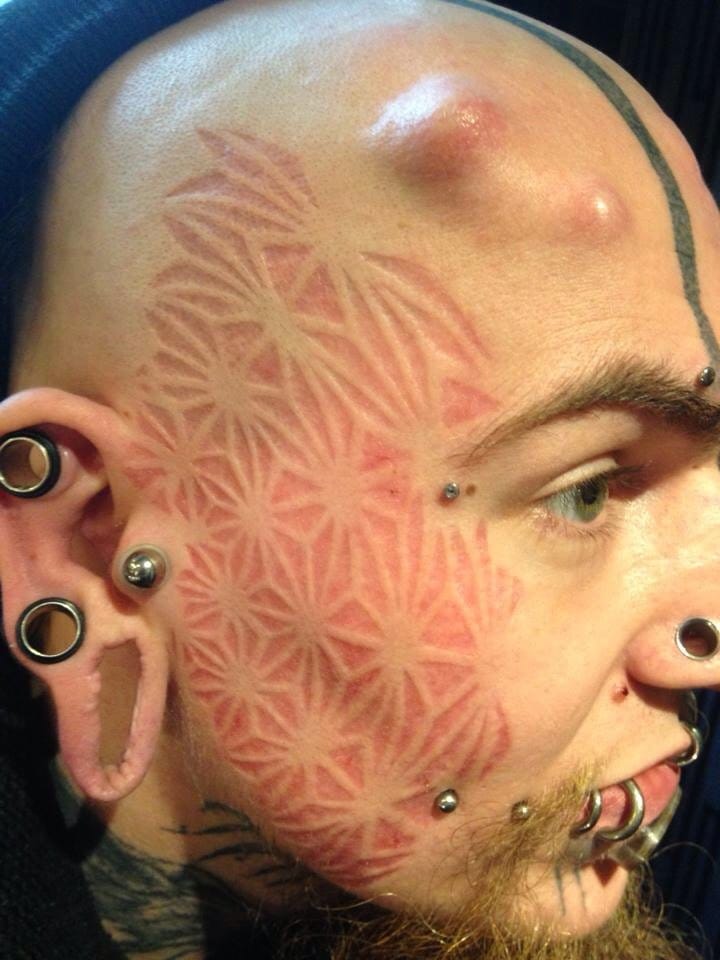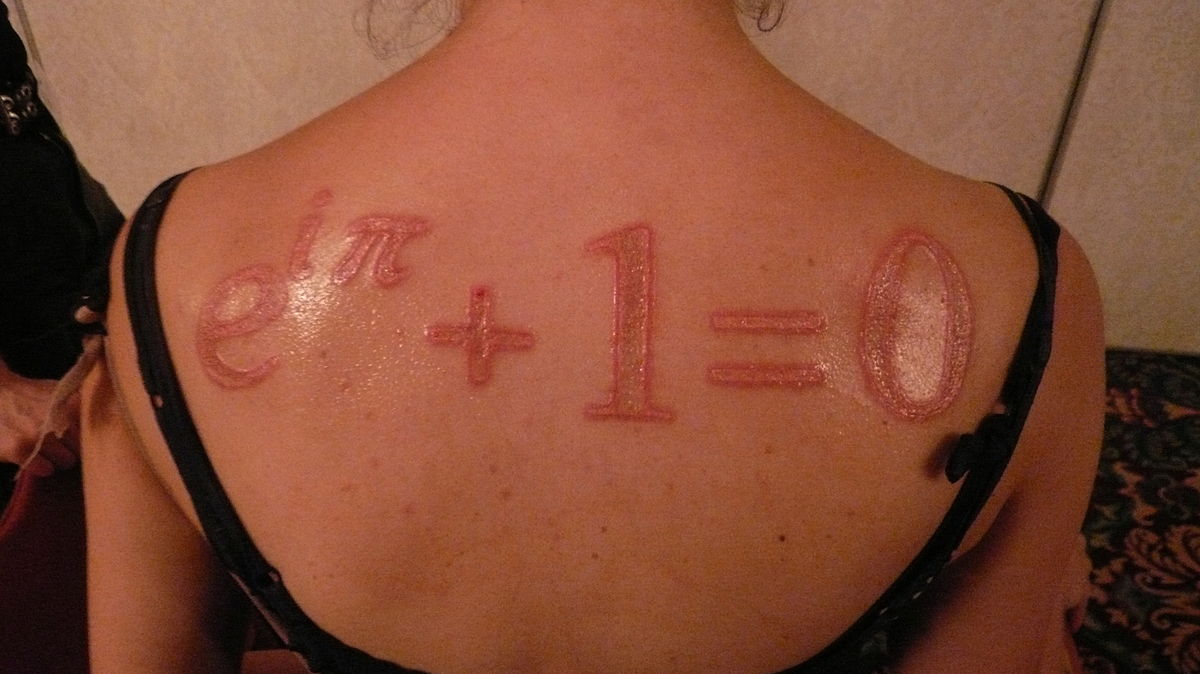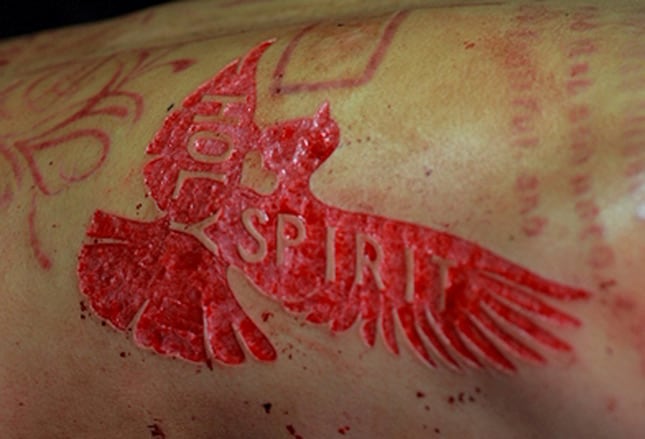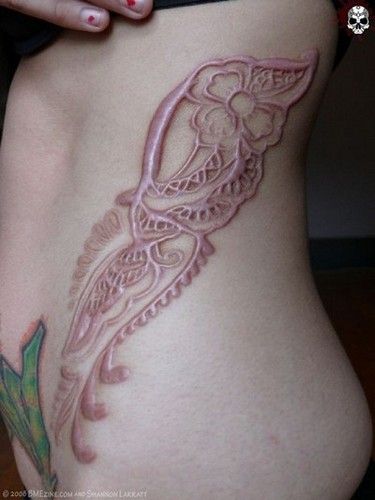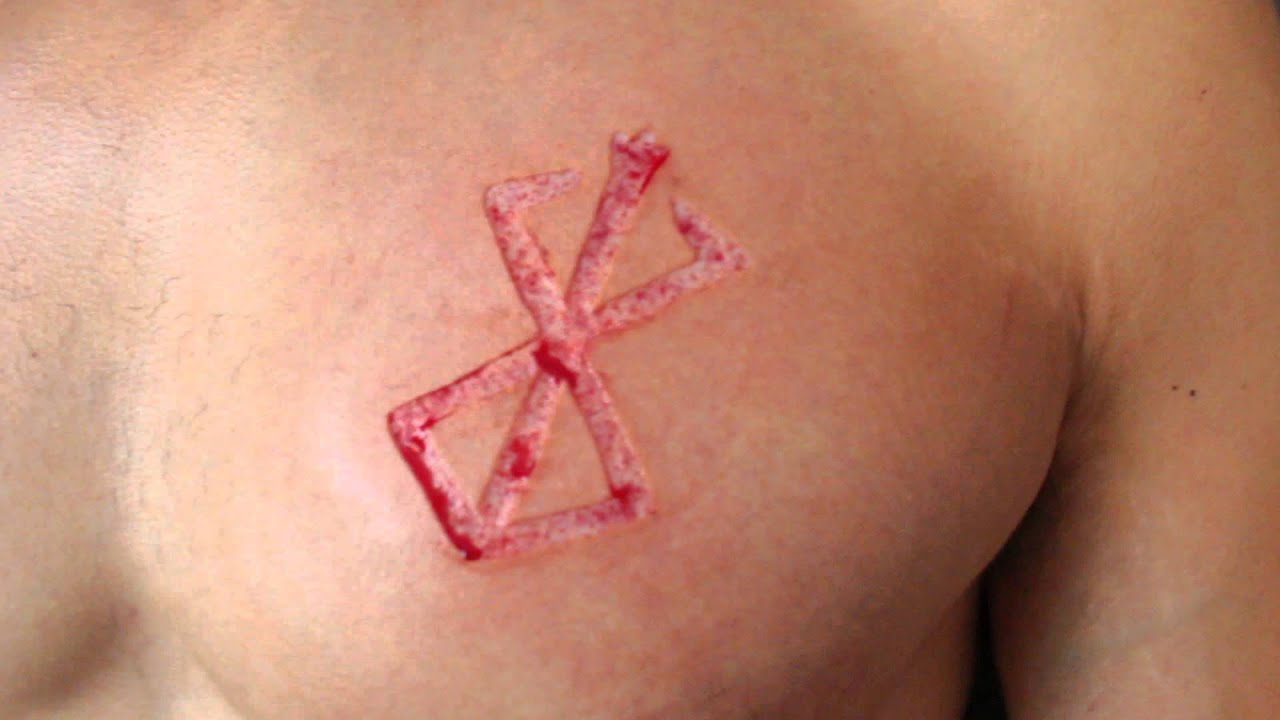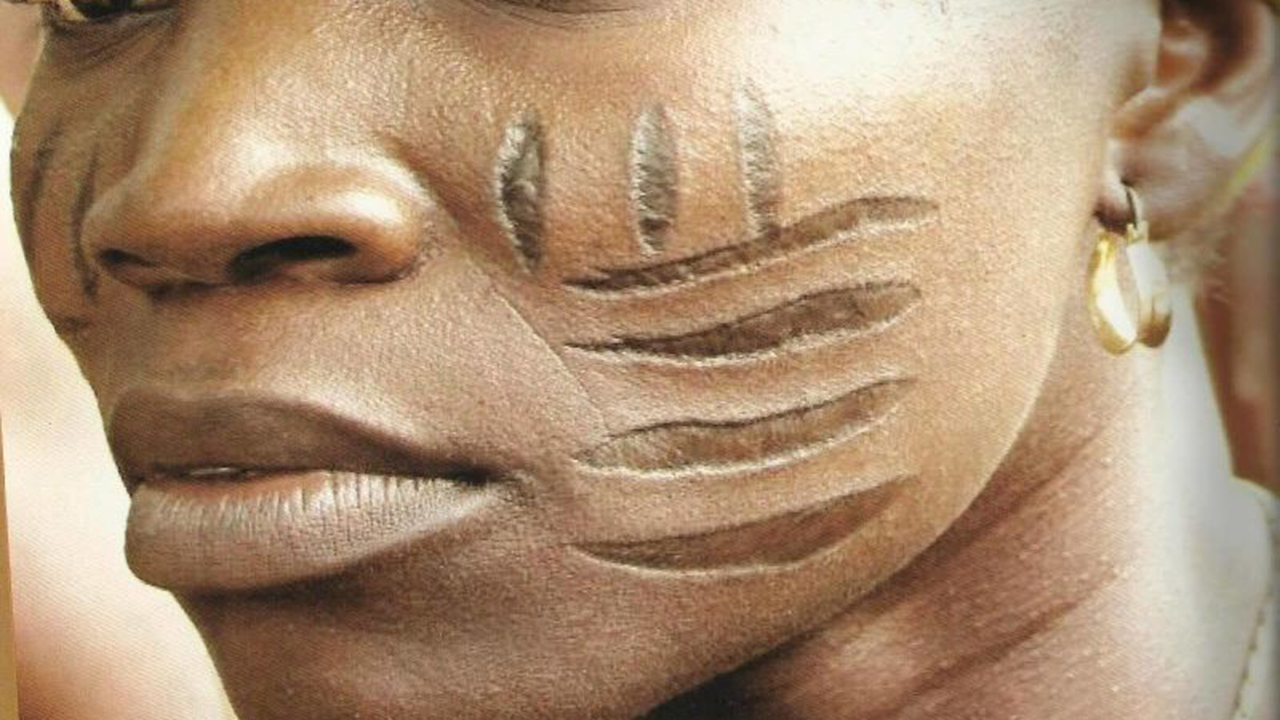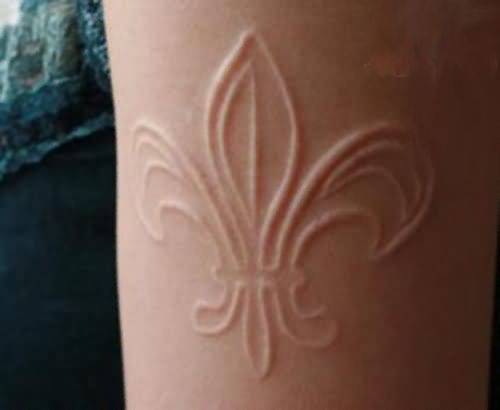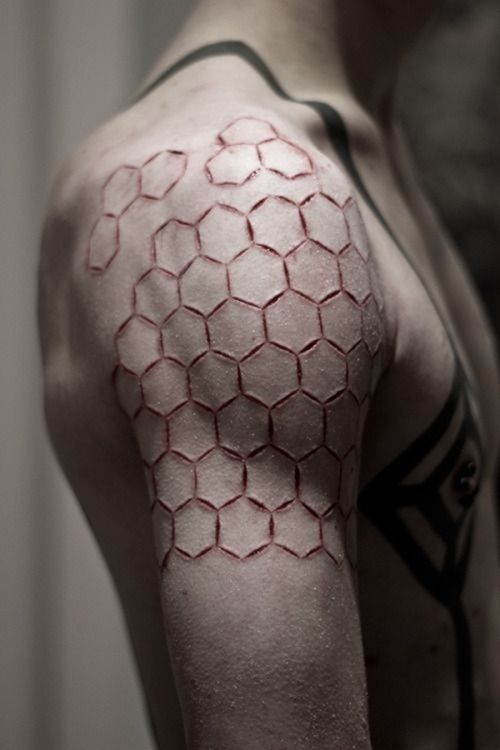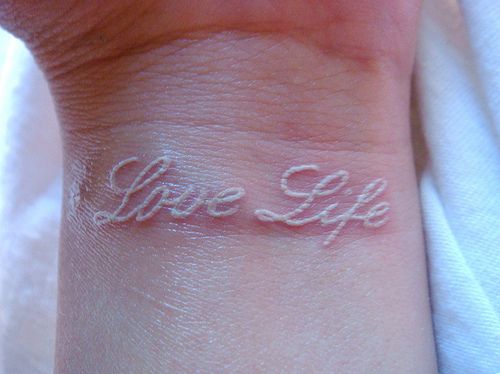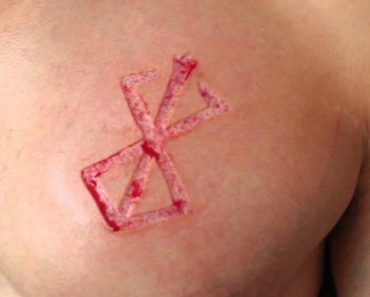Throughout the ages, people have used scarification as a means of changing and altering their appearances as a permanent body modification. Scarification includes scrawling, etching, burning/branding, or superficially cutting designs into the skin. Healing time can range from 6 to 12 months depending on the extent of the modification. Scarification, or body scarification, is the process of intentionally creating scars by cutting or branding the skin by various methods (sometimes using further sequential aggravating wound-healing techniques at intervals, like irritation). Scarification is also known as cicatrization (from the French translation).
In this article, we have taken all the important points that concern scarification. Thus we will talk about how and why one goes under this method. Before you decide to undergo this process yourself, make sure that you know every minute detail. It is important to consult a physician too before you move ahead with your decidison. We have tried to deliver maximum information in the following sections.
Reasons for Scarification
Contents (Click to Jump)
In anthropology, the body has been debated for a long time as a boundary. As a result of his descriptions of body transformations, including tattooing, scarification, and painting, Van Gennep labeled these practices as rites of passage. Claude Levi-Strauss wrote in 1963 that the body was a surface waiting to be inscribed with culture. Turner (1980) defined “social skin” for the first time in his study of how Kayapo culture was constructed and expressed through individual bodies. Inscribed skin raises an issue that has been central to the study of anthropology since its inception: the boundary between the individual and society, with resulting implications for the relationship between representation and experience.
There are currently four competing theories behind scarification: (1) a rite of passage, (2) a traumatizing procedure, (3) an inadaptive pathogen-driven sexual selection mechanism, or (4) a nonadaptive sexual selection process. In addition to aesthetic and religious reasons, scarification is also socially and religiously motivated. For example, scarification has been used widely by many tribes of West Africa to mark milestone stages in both women’s and men’s lives, such as puberty and marriage. In women, scarring on their abdomen may indicate a readiness to become mothers, since the ability to tolerate the pain of scarring could indicate maturity and readiness for childbirth. In addition to expressing identity, it also conveys complicated messages; permanent body markings can convey messages about fixed social, political, or religious roles. For marking their transition into manhood, young Chambri boys in Papua New Guinea undergo scarification that mimics crocodile scales, which comes from their belief that humans were evolutionary descendants of crocodiles. Tattoos, scars, brands, and piercings are ways for people to show their autobiographies on the surface of their body when they choose voluntarily to receive them.
In general, those tribe members who refused to participate in scarification were not included in the group’s activities and were often shunned from the community. It is argued by Harris that individuals who do not have certain characteristics that are considered characteristic of their group will not be regarded as full agents. Additionally, a person without these abilities would not be able to engage in meaningful behaviors, such as greeting, commanding, and stating. Consequently, scarification allows tribal members to transform into normal states accepted by the entire group upon their return. In scarification, language is not readily expressed except through detailed and intricate greetings. This form of communication allows a person to be considered a normal member of his community since it allows full communication.
The scarification of Aeta tattoos was done with dash-like incisions by a small knife, used to make scarifications on men in the Philippines (c.1885)
- People with darker skin tend to have more scarification than those with tattoos.
- A euphoric state can be induced by endorphins released during the scarification process.
- Pain endurance is one of the main reasons for scarification. The endurance of pain of scarring is a sign of strength and discipline for young men, especially in tribes where fighters and hunters are the norms. People who have already been cut or ripped apart are less likely to fear the teeth of wild animals or the tip of an enemy’s spear because they have already felt the pain of being torn apart.
- Scarification in Ethiopia is done when Suri men attack somebody from an enemy tribe; Mursi practices scarification for largely aesthetic reasons, as a means of attracting the opposing sex and enhancing their tactile experiences while in sex. Scars are regarded by the Ekos of Nigeria as money on the way to the hereafter.
- In the Nuba tribe of Sudan, scars are believed to have medicinal properties; scars above the eyes, for example, are thought to improve eyesight, and scars on the temples to relieve headaches. Scarification is a traditional healing method used by some tribes in Northern Ghana including the Dagomba to treat convulsions, measles, pneumonia, stomach discomfort, and other ailments. Traditional healers have believed that bloodborne illnesses originate in the bloodstream, which is why they cut a patient’s skin then apply powder or potions to the wound, which enter the bloodstream directly.
- Survivor status can also be changed through scarification. People in these cultures go through various kinds of ritual death and rebirth as well as redefine relationships between self and society by changing their skin.
- Those who have “markings” in certain regions of Africa can be identified as being part of an ethnic or tribal group. People have used markings for centuries in Northern Ghana, such as the Gonjas, Nanumbas, Dagombas, Frafras, and Mamprusis.
Scarification is a traditional practice in sub-Saharan Africa among groups including Gonja, Dagomba, Frafra, Mamprusi, Nanumba, Bali, Tɔfin, Bobo, Montol, Kofyar, Yoruba, and Tiv people of West Africa, and the Dinka, Nuer, Surma, Shilluk, Toposa, Moru, Bondei, Shambala, Barabaig, and Maasai people of East Africa.
What Would be the Purpose of Such a Thing?
Although I’ll be the first to tell you that intentionally inflicting scars on yourself may seem like a behavior associated with the mentally ill, it’s more often than not a mode of expression as opposed to a cry for attention. The alteration of the physical body has been common for centuries as a means of artistic expression, spiritual enlightenment, and right of passage, as well as sexual experimentation. The scarification of bodies has historically been used by tribal cultures and warriors to mark birth, coming of age, puberty, sacrifice, social or military status, marriage, and spiritual or religious confirmation. There are many different types of scarification practices today, and many of them are similar to those of the past, or entirely different. Individuals modify their bodies for different reasons; one needs to approach this matter with respect and an open mind.
What to Know Before Getting Scarified
Every scar changes with time, no matter the technique used. After a few weeks, scars will fade and become closer to the color of your skin. Healed scars always have a different appearance from tattoos; some will be flat and some will be raised. Former body modification artist Blair McLean, who has been scarifying for over 20 years, states that healing scars consistently relies on four key principles.
Your scars are affected by your artist’s skill in the first place. Just as with a traditional tattoo, the ability of the artist – including factors such as technique, depth of needles, and consistency of work – greatly affects how the scars will appear when they heal after the tattoo. Choosing an artist to scar you should depend on your trust and their experience. Find someone that has a portfolio full of well-done and safe scars. Another sign of a good artist is someone who has a deep understanding of the practice’s history, as they will be able to offer more than just a collection of skills, as they will be able to adapt their practice to its new cultural environment.
Various Methods of Scarification
During scarification, there are several variables, such as skin type, cut depth, and how the wound was treated during healing, which makes the outcome unpredictable. It is possible that a method that works on one person will not work on another. Because scars tend to spread during healing, outcome design is usually simple, since details will be lost in the process.
Historic Scarification
Scarification can be seen in the archaeological site at Ain Ghazal in Jordan, where two headless figurines of fertility goddesses from the early Paleolithic (8000 BCE) were found with thick scarification lines around their thighs and abdomen. In the Tassili N’Ajjer rock painting (c. 7000 B.C.E.) at Tanzoumaitak, Algeria, the Horned Goddess is also scarified on the breasts, belly, thighs, shoulders, and calves. Women from West and Central Africa tend to exhibit scarification in similar ways to those depicted in figurines and paintings.
Each culture has its own significance for the scarification process and its resulting scars. African, Australian, Papua New Guinean, South American, Central American, and North American countries have historically practiced scarification. Among cultural groups in these areas, scarification symbolizes a lifelong commitment to social roles, rituals, and cultural values, rites of passage and age grades, as well as the sexualization of the body. The core value is increasing sexual attraction and enjoyment of sexual relations, as well as enhancing group identity, aesthetic values, and spiritual relationships. Additionally, it is used as part of medicinal and healing rituals, as well as a means of demonstrating endurance in a painful situation. As a result of changing cultures and globalization, many of these scarification practices have been outlawed or banned by local governments.
Contemporary Scarification
A variety of Western microcultures, including modern primitives and punks as well as fraternities and sororities, have practiced scarification throughout the twentieth and twenty-first centuries. The meanings of scarification vary among these cultural groups, including group identity, personal identity, rites of passage, spirituality, and connection to tribal cultures. To obtain desired scarification patterns or designs, these microcultures use a variety of methods, including cutting, packing, ink rubbings, skinning, abrasion, and chemical agents.
Emphasizing Scars
Maintaining an open wound by repeatedly re-cutting the healing skin may cause a longer, more pronounced scar as well as delay the healing process and increase the chances of health complications. As a result of packing, scars become more prominent since inert materials, such as ashes or clay, are injected into the open incisions or parts of the skin that are cut and the scar tissue grows around or over them. In addition to scarring from packing, the term cicatrization generally refers to more pronounced scarring.
Ink rubbing is the process of applying indelible tattoo ink or other pigment and then cutting it. It produces a colored scar as it heals, as the ink remains in the cut as it heals. Lighter skin tones will see more visible scars due to this method, even though the intensity can vary from person to person.
Branding
Human branding is an example of scarification. Like branding livestock, it is a form of identification.
Strike branding
A piece of metal is heated and pressed into the skin for branding purposes, just as it is for branding livestock. The use of strike branding was historical to claim slaves or to punish criminals, but nowadays it is less advantageous because it does not leave a precise mark and spreads easily upon healing, making it less suitable for curved areas of the body. One of the most effective marketing strategies is multi-strike marketing, i.e., it is done piece by piece rather than all at once. Rather than using a V-shaped piece of metal, two lines would be burned separately by a straight piece of metal to obtain a V-shaped brand.
Cautery branding
The use of this form of branding is less common. A heated wire tip is used to cause the burns with a thermal cautery tool.
Laser branding
In the field of body modification, laser branding was invented by Steve Haworth, who is credited with using it for years. Technically, the procedure is known as “electrosurgery branding”. Even though a medical laser could be used for scarification, this term does not refer to an actual laser, but to an electrosurgical unit that uses electricity to cut and cauterize the skin, in the same way, an electric arc welder works. Electric sparks explode from the hand-held pen on the device, vaporizing the skin. A more precise scarification method is possible, as it is possible to control the degree and nature of the damage done to the skin. In contrast to traditional direct branding that transfers heat to the surrounding tissues and burns or damages them, electrosurgery branding vaporizes the skin so precisely and so rapidly that there is little to no heat generated or damage caused to the surrounding skin. As a result, scarification is much easier and more comfortable than you might think.
Cold branding
In contrast to strike branding, metal branding tools are subject to extreme cold (like liquid nitrogen) rather than high heat during this rare method of branding. In this procedure, the hair will grow back white and there will be no keloid formation. A similar process is used to brand livestock and is called freeze branding in that case.
Cutting
Cutting is a method of scarification, in which you cut the skin with the use of a sharp instrument, such as a sharpened bone, scalpel, or razor blade, known as a scarifier. Today’s cutting tools can be either disposable or blades mounted on diverse handles. Single-piece disposable tools can also be available. Usually, the cuts are between one-sixteenth and a one-eighth inch deep. Deeper cuts increase the amount of scarring and the possibility of complications, while shallow cuts may heal without scarring, which negates the purpose of the modification.
The euphemism “cutting” is also used to describe self-harm, which also refers to cutting the skin for cosmetic purposes. Sometimes people may self-harm or scarify themselves for noncosmetic reasons. A surgical blade is used to cut the lines. The following techniques can be used:
Ink rubbing
It is common practice to apply tattoo ink (or another sterile colorant) to a fresh cut to color it. Almost all of the ink will remain in the skin as the cut heals, and it will behave like a tattoo when the skin heals.
Skin removal/skinning
The scar that results from cutting the skin thinly is relatively thin and the scar tissue from removing the skin is relatively large. A line will be traced around the spot in which skin needs to be removed, then the skin will be peeled off. In this method, the scar is often irregularly shaped, but that depends heavily on how the scar is treated and how the wound is treated afterward.
Packing
West African nations have traditionally used this method, but it is uncommon in the West. The wound is kept open by cutting diagonally into it and packing it with inert material such as ash or clay; when the wound heals, the material at the wound’s entrance is pushed out, causing a permanent scar. Cigar ashes can be used as a treatment for raised and purple scars in the United States, as well as the ashes of deceased persons.
Hatching
Taking the form of a surgical procedure, scarification uses a surgical scalpel to cut into the skin, similar to how flesh is removed. In areas that must be scarred more than once, the scarring is created using a hatching technique, similar to the sketching technique. The process of removing the flesh with one hand is easier than that of removing the flesh with two hands, which may be beneficial in certain circumstances. Although this technique can be time-consuming for large pieces, it is useful for smaller, more detailed designs and can enable shading to be used.
Abrasion
In the case of abrasion, scars are formed by removing layers of skin. It can be achieved by using an inkless tattooing machine or any object capable of removing skin through friction (such as sandpaper).
Abrasion scarification results from the removal of dermal layers of skin with friction. The creation of abrasion scarification is accomplished using power tools fitted with sandpaper, steel wool, or grinding stones. With manual pressure, abrasion scarification can be achieved as well, however, power tools speed up the process. As long as excessive pressure is not employed when using the abrasion scarifier, the method creates subtle scars.
Chemical Scarification
A chemical scarification procedure damages and burns the skin with liquid nitrogen, resulting in scarring. In terms of results, liquid chemical scarification is similar to other forms of scarification, except for intricate designs. Methods like this are relatively new, and there are few studies on them yet.
Scarification by chemical means involves corrosive chemicals that remove skin and leave scarring. There has been no research conducted on this method as its effects are typically similar to those of simpler scarification techniques.
Dangers of Scarification
There is a perception among many that scarification causes harm and trauma to the skin. There is a concern about infection. infection. In addition to using sterile materials for causing wounds, it’s important to keep the wound clean and use antibacterial solutions or soaps frequently as well as practice, and having good hygiene in general. An infection may develop around a wound if the wound is irritated, especially if it is healing slowly. Scarification workers need to have a thorough understanding of the anatomy of human skin, which will keep tools from cutting too deeply, burning too hot, or burning too long. There are fewer scarification workers than there are in the tattoo industry, so it is harder to find workers experienced in scarification.
Scarification poses health risks and aesthetic risks, as with most permanent body modifications. Because there are so many variables related to healing, scars will appear differently. In some cases, scarification may not fully heal for a year, and longer if skinning or packing are involved. As part of the initial healing process, it is important to take careful measures to avoid infection.
Health-related risks associated with scarification can also include improper technique, such as cutting too deep or acquiring blood-borne infections such as hepatitis B and C. Practitioners should take the appropriate measures to ensure the safety and well-being of their clients before performing scarification. Upon use by more than one patient, all medical equipment and instruments are sterilized in an autoclave or steamer which sterilizes them by killing the bacteria and blood-borne pathogens. By the scarification practitioner, the area of skin to be scarred is disinfected and prepared. In the scarification process, the skin is continually cleansed of excessive blood and disinfected.
Does It Hurt?
There’s a reason why a body modification procedure looks and sounds painful. Simple and straight to the point. There’s more to scarring than pain associated with the procedure itself. In some cases, the healing process may cause even more pain than the original wound itself. In the aftermath of healing scars, everyone’s choices will matter.
The primary goal of body modification is to provide an aesthetic enhancement to the individual, but maintaining personal hygiene and caring for open wounds are equally important.
The Healing Process
It’s important to observe how the wound is healed since it affects how the scar will appear. Scarring is less likely to occur when a wound heals quickly. To prevent this from occurring, several things can be done to prolong the healing process and increase the scarring. Open wounds can be allowed to dry out with the air. Those scabs are then removed, reopening the wound and refitting the process. During wet healing, wounds can also take longer to heal. To do this, bandages or cellophane should be applied to the wound and kept moist. The wounds can also be scrubbed vigorously with a brush or rubbed with salt during the healing process to slow down new cell growth and prolong the healing process. It is also possible to encourage scarring by applying products such as vinegar, lemon and lime juice, and iodine tinctures directly onto an open wound.
Aftercare Of Scarification Process
It is almost the complete opposite of the typical tattoo procedure to care for the body afterward. You may actually need to disturb your scar rather than keeping it away from possible irritation through scarification. Irritating the wound will ensure that a scar will remain raised even if the wound does not heal flat. People with enough scar tissue to prevent it from lying flat, however, may not need to be irritated during the healing process. Additionally, certain types of clothes can irritate scars, which means that they heal inconsistently in the areas where the clothes rub against them. A uniform irritation of your design is essential for ensuring consistency in healing. You should only use drugstore products that are safe when picking a scar. Make sure to wash your hands thoroughly after picking a scar. Be careful when cleaning your new scar! Those who forget to wash their designs regularly may get infected, making your design look awful.
Third, consider the placement of scars before undergoing any treatment. Each part of the body reacts differently to scarification, and the skin is an important part of that. There are many different types of skin, ranging from very thin to very thick. When someone with extremely sensitive skin attempts to place it in an area with inconsistent skin (which has thick skin in some areas and thin skin in others), they may not have much success. Scars usually look best when placed where the skin is of the same thickness and roughness throughout the entire area.
Last but not least, you should consider your own genetic makeup when it comes to scarification. In fact, your genetics play an integral part in the healing of your scars. Depending on your genetics and skin tone, your artist will adjust their scarification technique accordingly. A good scarification practice involves communicating directly with your artist not just about the design, but how they plan on implementing it too. Taking into consideration that every artist is unique, it is important to communicate with them so that you feel comfortable and will be satisfied with their work.
In an informational YouTube video, McLean notes that scarring abilities may not always be obvious; scars may have affected previous scars or may not have affected them. It is important that a scar is not flat or raised, but rather will be aesthetically pleasing to the client and recognizable years from now.

